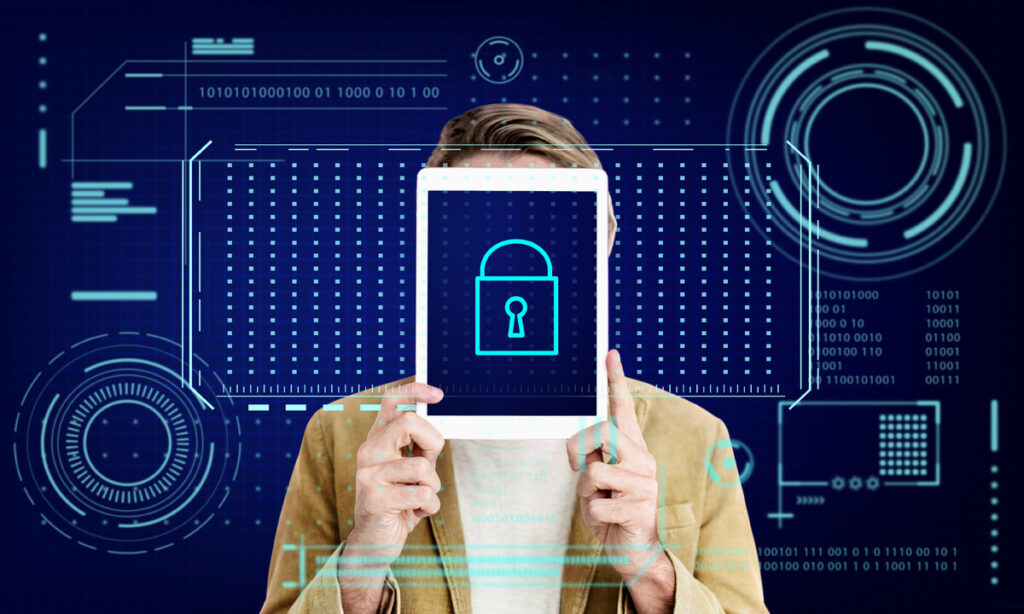Facial Recognition in Crowd Management: Balancing Security and Privacy

In an age where technology is rapidly transforming public safety and security, facial recognition has emerged as one of the most powerful and controversial tools for managing large crowds. Whether at airports, stadiums, concerts, protests, or even shopping malls, this technology allows authorities to identify individuals in real time, track movement patterns, and enhance security measures.
However, while facial recognition offers significant advantages in preventing crime and improving efficiency, it also raises deep concerns about privacy, mass surveillance, and ethical misuse. Critics argue that unchecked use of facial recognition can lead to a loss of anonymity, wrongful arrests, and discrimination, particularly against marginalized communities. Others fear that it could pave the way for a surveillance state where every movement is tracked and analyzed.
So, how do we find the right balance? Can we use facial recognition responsibly in crowd management without compromising individual freedoms? In this blog, we’ll explore the role of facial recognition in public safety, the ethical concerns surrounding it, and the best ways to implement it while respecting privacy rights.
The Role of Facial Recognition in Crowd Management
Facial recognition technology (FRT) works by analyzing unique facial features, such as the distance between a person’s eyes, nose shape, and jawline. This biometric data is then compared to an existing database of images to verify or identify individuals. In crowd management, this technology plays a crucial role in several areas:
1. Enhancing Security at Public Events
Large-scale events such as concerts, sports matches, religious gatherings, and festivals attract thousands of people, making them potential targets for criminal activities, terrorism, or riots.
Proactive Threat Detection: By scanning the crowd for individuals on watchlists—such as known criminals, terrorists, or people with outstanding arrest warrants—law enforcement can prevent potential threats before they occur.
Preventing Unauthorized Entry: Many events have strict entry rules, such as banning individuals who have previously caused disturbances. Facial recognition can automatically flag these individuals and prevent their access.
Reducing the Risk of Stampedes: By monitoring crowd density in real time, authorities can take preventive measures to avoid overcrowding, which can lead to dangerous situations such as stampedes.
For example, during the 2020 Tokyo Olympics, facial recognition was used to identify athletes, staff, and media personnel, reducing security risks while also speeding up access control.
2. Improving Law Enforcement Response
Facial recognition enables law enforcement agencies to respond more effectively to emergencies, criminal activities, and missing person reports.
Identifying Suspects Quickly: If a crime occurs during an event, authorities can instantly scan through surveillance footage to identify and track the suspect. This reduces the time needed to apprehend criminals and improves public safety.
Locating Missing Persons: Whether it’s a lost child at a crowded fair or a person with dementia wandering in a public place, facial recognition can help locate them within minutes by matching their face with stored images.
Detecting Fake Identities: Some criminals use fake IDs to enter restricted areas. FRT can compare their facial features with official databases to detect discrepancies.
3. Speeding Up Checkpoints and Access Control
Facial recognition can significantly reduce waiting times at security checkpoints by automating identity verification.
Faster Airport Security: Many airports now use facial recognition to streamline immigration processes, reducing the need for manual passport checks. This enhances efficiency while maintaining security.
Seamless Stadium and Event Check-ins: Instead of scanning tickets or IDs, attendees can gain access through facial recognition, eliminating long queues and enhancing convenience.
Workplace and School Security: Many organizations and educational institutions use facial recognition to control access to sensitive areas, ensuring that only authorized personnel can enter.
4. Crowd Flow Management
Facial recognition is not just about security; it also helps improve the overall management of large crowds.
Predicting Congestion Points: By tracking movement patterns, authorities can identify where crowds are building up and take proactive measures to manage them, such as redirecting people through alternate routes.
Analyzing Behavioral Trends: Businesses can use facial recognition to analyze customer behavior in malls, identifying popular sections and adjusting store layouts accordingly.
Enhancing Public Transport Efficiency: Metro stations and bus terminals can use FRT to monitor crowd density and optimize transport schedules.
Privacy Concerns and Ethical Challenges

Despite its benefits, facial recognition technology has sparked intense debates over privacy violations, potential abuse, and its long-term implications for civil liberties. Some of the key concerns include:
1. Mass Surveillance and Loss of Anonymity
One of the most alarming aspects of facial recognition is the possibility of mass surveillance, where people are constantly tracked without their knowledge or consent.
Unlike traditional security measures like metal detectors or ID checks, facial recognition operates invisibly, meaning individuals often don’t even realize they are being monitored.
In cities with extensive surveillance networks, such as London and Beijing, critics argue that FRT creates a “Big Brother” society where no one can move freely without being tracked.
Governments could use FRT to suppress political dissent by identifying and targeting activists, journalists, or protesters, threatening democratic rights.
2. Misidentification and Algorithmic Bias
Facial recognition is not infallible. Studies have shown that many FRT systems have higher error rates when identifying people of color, women, and children.
In 2018, an MIT study found that some facial recognition algorithms misidentified dark-skinned women nearly 35% of the time, compared to a 1% error rate for white men.
In real-world cases, false positives have led to wrongful arrests, causing significant harm to innocent individuals.
Bias in facial recognition can lead to discrimination, reinforcing existing racial and gender inequalities in law enforcement and security.
3. Data Security Risks
Facial recognition relies on massive databases containing biometric information. If these databases are hacked or misused, the consequences can be severe.
Cybercriminals could steal biometric data and use it for identity theft, fraud, or even deepfake manipulations.
Unlike passwords, facial features cannot be changed—once compromised, they are permanently at risk.
Private companies and governments might collect and store facial data without clear policies on how long they can keep it or whom they can share it with.
4. Lack of Clear Regulations
Currently, many countries lack strict regulations on how facial recognition should be used.
In some places, private companies and law enforcement agencies deploy FRT without public knowledge or legal oversight.
Countries like China have embraced FRT for mass surveillance, while others like the European Union are considering bans on its use in public spaces.
Without clear laws, there is a risk that FRT could be exploited for unethical purposes, such as commercial tracking or government surveillance
Finding the Right Balance: Ensuring Ethical Use of Facial Recognition
To use facial recognition responsibly in crowd management, it is essential to balance security with privacy. Here are some solutions:
1. Implement Transparency and Public Consent
Authorities should disclose when and where facial recognition is being used.
People should have the right to opt-out if they do not wish to be scanned.
2. Improve Accuracy and Reduce Bias
AI developers must work on eliminating racial and gender biases in facial recognition algorithms.
Independent audits should be conducted to ensure fairness and accuracy.
3. Limit Data Storage and Access
Facial recognition data should be used in real time and not stored indefinitely.
Only authorized personnel should have access to biometric databases
4. Establish Strong Legal Frameworks
Governments should create laws that define clear boundaries on FRT use.
Regulations should prevent misuse by private companies and law enforcement agencies.
5. Consider Alternative Technologies
Non-invasive security measures such as QR-code check-ins, crowd density analysis, and behavioral tracking could offer security without violating privacy.
For more details contact:grow@simbi.in
Frequently
Asked Questions
Facial recognition is used in crowd management to:
Identify persons of interest (e.g., criminals or missing people)
Enhance access control at venues and checkpoints
Monitor crowd density and movement patterns
Ensure security at large events or public gatherings
Speed up immigration and security checks in airports and public transport hubs
The accuracy of FRT has improved significantly with AI and machine learning. However, it’s not perfect—studies show that some systems still struggle with misidentification, particularly among people with darker skin tones, women, and children. Accuracy can also be affected by lighting, camera angles, and the quality of the images used.
Key privacy concerns include:
Lack of consent: Often used in public spaces without notifying individuals
Mass surveillance: Can lead to constant monitoring of people’s movements
Data misuse: Biometric data can be hacked, leaked, or misused
Loss of anonymity: People may feel like they are being watched at all times, impacting their freedom of expression and movement
Yes. There have been documented cases where facial recognition systems have led to wrongful arrests due to misidentification, particularly of people from minority groups. Algorithmic bias remains a significant issue, highlighting the need for regulation and diverse training datasets.
It depends on the country or region:
United States: Rules vary by state; some cities have banned government use of FRT, while others use it extensively.
European Union: GDPR places strict limits on biometric data use, and a ban on public facial recognition is being considered.
China: Widespread use with few privacy restrictions.
India & other countries: Emerging regulations are being developed.
